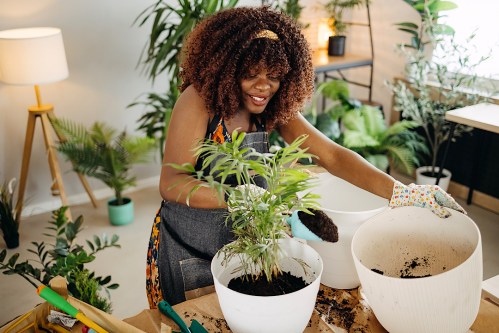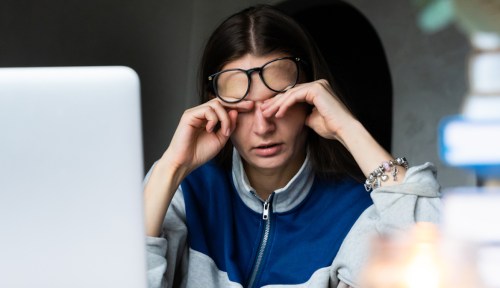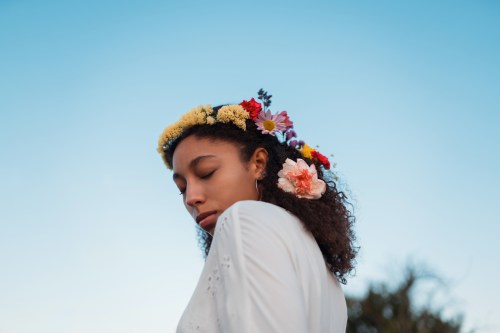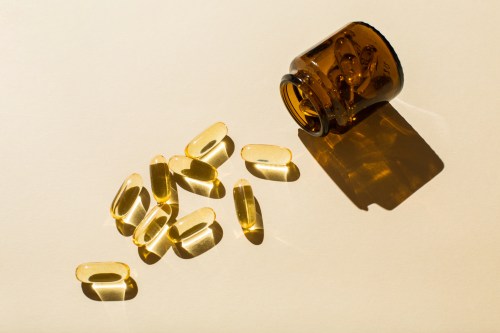I’ll be honest, I’m not a good plant mom. I once had a fiddle leaf fig named Oprah that I apparently gave too much love to. One afternoon while I was talking to her, right in front of my face, she dropped off her remaining leaves. And that was the end of Oprah. In her defense, she was sitting in a dark spot (because she looked aesthetically pleasing there, which turns out isn’t a priority for plants) and I may have overwatered her.
Experts in This Article
Since Oprah, there have been many other plants that have come and gone. My mom even suggested purchasing a hard-to-kill snake plant that’s I’ve named Isobel. I’ve been doing everything in my power to keep her alive—and that includes figuring out what to threats to soil to avoid so that I don’t wind up with another Oprah situation on my hands.
So before it’s too late for Isobel, I spoke with soil and environmental scientist Agnieszka Piwowarczyk, PhD, (better known as Dr. Aga) to learn more about what plants need from soil to not only survive, but thrive.
Firstly, what is potting soil made of?
Potting soil or potting compost isn’t technically soil at all. It’s a mix of components like peat moss, and some extra organic materials like stone wool, perlite, and vermiculite that are very nutrient-dense and offer good drainage, says Dr. Aga. Unlike real soil, which can contain fungus or bacteria that could harm your houseplants, potting mix is typically sterilized to protect them from microorganisms that could cause disease.
So you can sort of think of potting compost as a blank canvas. To maintain its high-nutrient quality, you need to water and fertilize it regularly, but equally as important as what you introduce to your soil is what you make sure to keep out of it.
3 common threats to soil and how to safeguard against them
1. Home pesticides
Like with humans and what we put in and on our bodies, introducing toxins into your potting mix is a common threat to soil that can disrupt its natural ecosystem. “We want to avoid the different forms of [commercial] pesticides for home use,” says Dr. Aga. “These chemicals not only contain reduced concentrations of the active ingredients, but can be equally harmful to the life of the soil overtime, thus affecting our plants too.” The purpose of any pesticide is to protect plants for irritants like insects, weeds, or even infectious organisms. Should you find yourself in need of safeguarding your houseplants from any of the above, opt for natural pesticides like neem oil instead. They are non-toxic solutions vetted by the EPA for use on organic food so they are A-okay to spritz on your plant babies.
2. Soil compaction
Dr. Aga says you also never want to let your potting soil lose its structural stability, a state known as soil compaction that doesn’t allow air and water to pass through. Similarly to how we want our skin care to really sink in through our pores, soil needs tiny holes through which to absorb water and plant food. When compaction occurs, the pore space is so tight, and that reduces the rate of both water infiltration, as well as drainage on the other side. This can impact root development (or even create root rot) and lead to smaller plant sizes. Over or under watering your plants can cause to soil compaction, as can using a pot without adequate airflow—typically, this is the case with plastic ones. To aerate your soil and loosen things up, you can use chopsticks to poke holes into it, but if that doesn’t work, consider repotting your plant with new potting mix.
3. Bleached soil
The color of potting soil is another indicator of its health. “Never let the soil go light in color unless your plants don’t have many requirements like cacti,” warns Dr. Aga. “For most plants that enjoy richer soils, we want the soil to be dark brown or even almost black. Losing this dark color indicates losing the soil organic matter. Adding compost and other soil amendments like feeds should help to maintain the desired organic matter status of the soil.” If that still doesn’t help, she suggests changing the soil.
Sign Up for Our Daily Newsletter
Get all the latest in wellness, trends, food, fitness, beauty, and more delivered right to your inbox.
Got it, you've been added to our email list.










